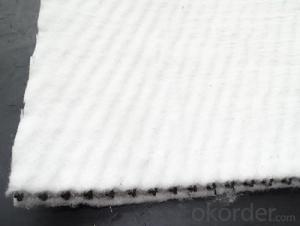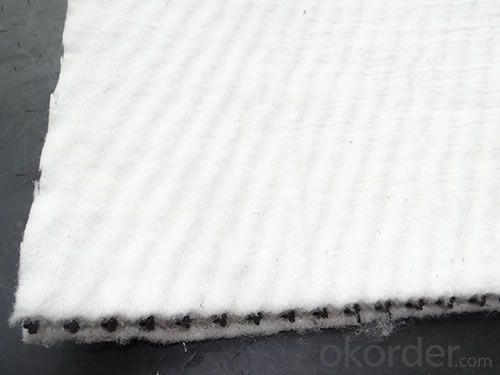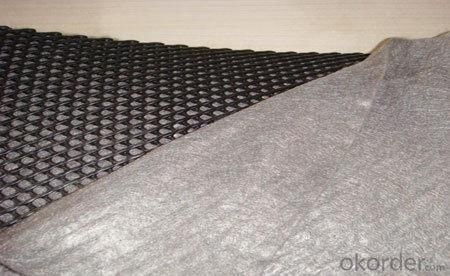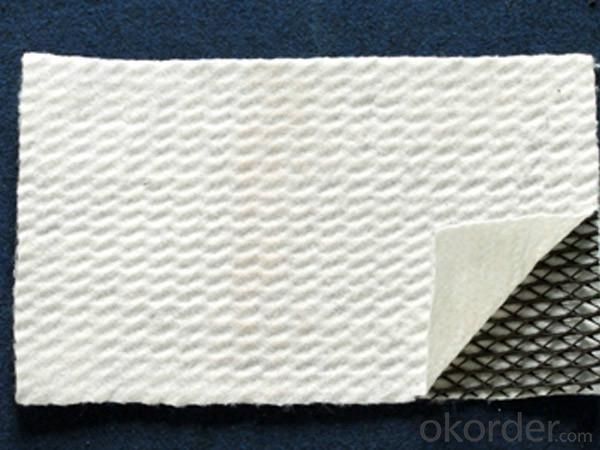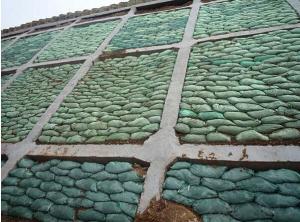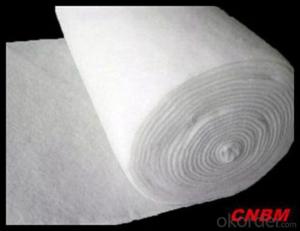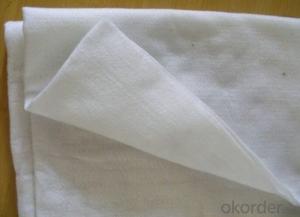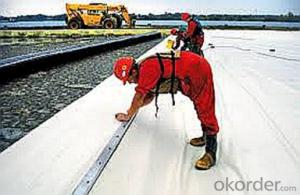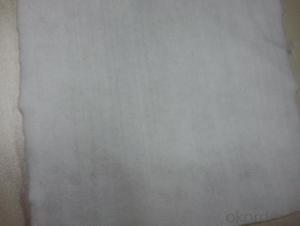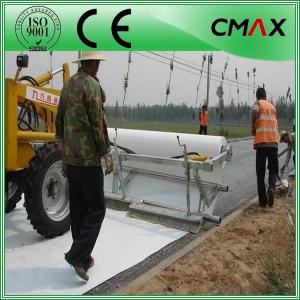Non Woven Geotextile Fabric for Pavers - Composite Drainage Network with CE Certification
- Loading Port:
- Qingdao
- Payment Terms:
- TT OR LC
- Min Order Qty:
- 10000 pc
- Supply Capability:
- 500000 pc/month
OKorder Service Pledge
OKorder Financial Service
You Might Also Like
Description Of Composite Drainage Network
Tri-dimension composite genet for drainage is a new type of geosynthetics.
Its made of atri-dimension geonet coated with geotextile on both sides. Network core consists of a tri-dimension thick vertical rib, and a rip on top and bottom .
It can drain underground water quickly, also there is a protection system,which can block the capillary water under high load. At the same time, it can also reinforce and isolate of foundation.
Main Features of Composite Drainage Network
1.Excellent drainage function, can bear long time hige press load
2.High tensile and shear strength
3.Reduce the rate geotextile embedding into the core of geonet, can protect long time stable water conductivity
4.Tri-dimension composite geonet for drainage can bear more than kpa compression load
5.Its anti-compression capacity is much larger than common geonet for drainage.
Specifications of Composite Drainage Network
Tri-dimension composite geonet for drainage
Drainage netwrok core | units | Specification | |||
Unit weight | g/m2 | 750 | 1000 | 1300 | 1600 |
Thickness OV=20kpa | mm | 5.0 | 6.0 | 7.0 | 7.6 |
Hydraulic conductivity | m/s | K x 10 -4 | K x 10 -4 | K x 10 -3 | K x 10 -3 |
Elongation | % | <50 | <50 | <50 | <50 |
Tensile strength ( core network) | KN/m | 8 | 10 | 12 | 14 |
Geotextile | g/m2 | 200-200 | 200-200 | 200-200 | 200-200 |
Composite Drainage Network Images
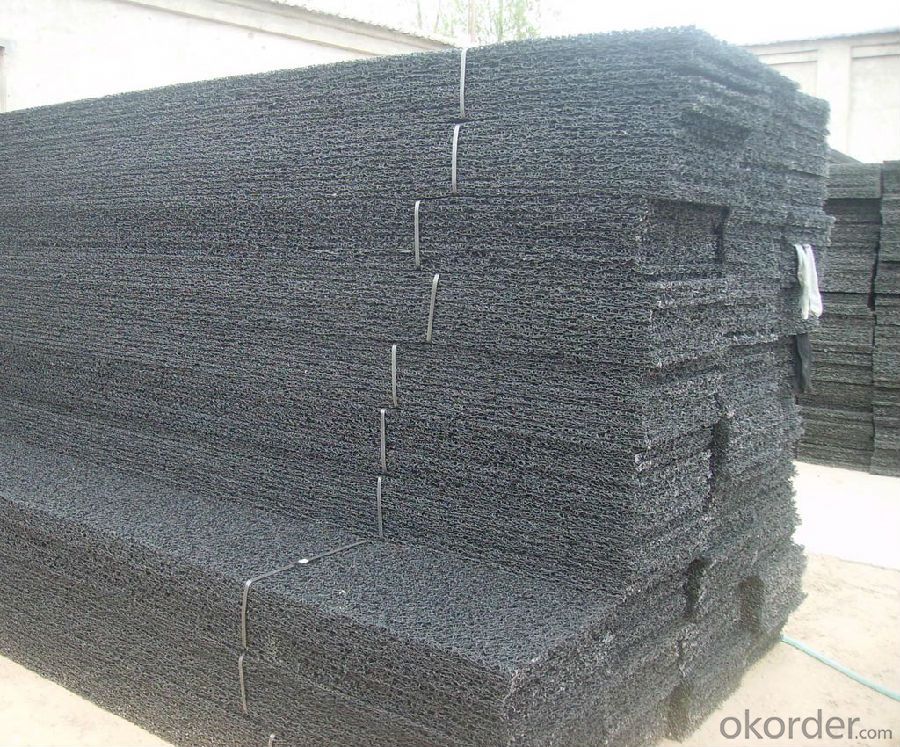

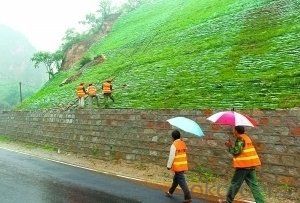
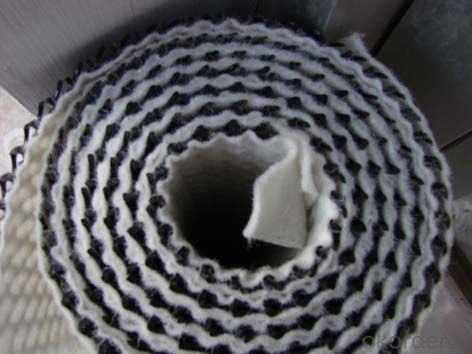

FAQ
1. Do you supply free samples for customers?
Yes,we will supply free samples for you.Please send your address for us.
2. How Many years experience do you have?
We have been exported to more than 20 countries in the past 15 years.
3. How long do we usually reply your request?
We always reply our customer within 24 hours.
- Q: How do geotextiles help in preventing the loss of aggregate in parking lots?
- Geotextiles help in preventing the loss of aggregate in parking lots by acting as a barrier between the aggregate and the underlying soil. This prevents the aggregate from sinking into the soil and being displaced by the weight of vehicles or erosion caused by water runoff. The geotextile material provides stability and reinforcement to the aggregate, helping to maintain its integrity and prolong the lifespan of the parking lot.
- Q: Can geotextiles be used in rockfall protection works?
- Yes, geotextiles can be used in rockfall protection works. Geotextiles are often employed as a barrier or reinforcement material in these types of projects. They can help to prevent the displacement of rocks and soil, enhance the stability of slopes, and provide additional support to rockfall protection structures.
- Q: How do geotextiles contribute to the stability of landfill slopes?
- Geotextiles contribute to the stability of landfill slopes by providing reinforcement and erosion control. They are placed between the different layers of soil or waste materials in the landfill, acting as a barrier to prevent soil erosion and the loss of landfill materials. The geotextiles also help to distribute loads across the slope, increasing its overall stability and preventing slope failures. Additionally, they improve drainage by allowing water to pass through, reducing the risk of pore water pressure buildup which can further destabilize the slope.
- Q: Can geotextiles be used in geotechnical engineering projects?
- Yes, geotextiles can be used in geotechnical engineering projects. Geotextiles are engineered fabrics that are commonly used to reinforce soil, separate different soil layers, and provide filtration and drainage in various geotechnical applications. They can improve the stability, strength, and performance of soil structures, such as retaining walls, embankments, and roadways, by effectively managing water flow and soil interactions.
- Q: What are the key factors affecting the creep behavior of geotextiles?
- The key factors affecting the creep behavior of geotextiles include the material properties of the geotextile itself, such as its tensile strength, elongation capacity, and viscoelastic behavior. The load applied to the geotextile, including the magnitude and duration, also plays a significant role in its creep behavior. Environmental conditions, such as temperature, moisture, and UV exposure, can further influence the creep performance of geotextiles. Additionally, the installation and stress transfer mechanisms between the geotextile and adjacent soils or structures can affect its creep behavior.
- Q: Geotextile how much money
- Good point of about 7000 a ton, different quality is not the same price.
- Q: How do geotextiles aid in the reduction of soil compaction?
- Geotextiles aid in the reduction of soil compaction by acting as a barrier between the soil and external forces. They distribute the load over a larger area, reducing the pressure on the soil. This helps to minimize soil compaction and maintain the structural integrity of the soil, making it more resistant to compression.
- Q: Geotextile puncture test standard
- Staple stitch filament piercing filament woven weaving
- Q: Polyester filament nonwoven is filament geotextile
- Yes, generally do geotextile material, polyester filament nonwoven fabric refers to filament geotextile. Huazhi geotechnical materials manufacturers to answer your questions
- Q: How do geotextiles help with erosion control on coastal cliffs?
- Geotextiles help with erosion control on coastal cliffs by acting as a barrier that prevents the soil from being washed away by the force of waves and rainwater runoff. These synthetic fabrics are placed along the cliff face to stabilize the soil and hold it in place, reducing the impact of erosion. Additionally, geotextiles promote vegetation growth by providing a suitable environment for plants to establish roots, further reinforcing the soil and preventing erosion.
Send your message to us
Non Woven Geotextile Fabric for Pavers - Composite Drainage Network with CE Certification
- Loading Port:
- Qingdao
- Payment Terms:
- TT OR LC
- Min Order Qty:
- 10000 pc
- Supply Capability:
- 500000 pc/month
OKorder Service Pledge
OKorder Financial Service
Similar products
Hot products
Hot Searches
Related keywords
